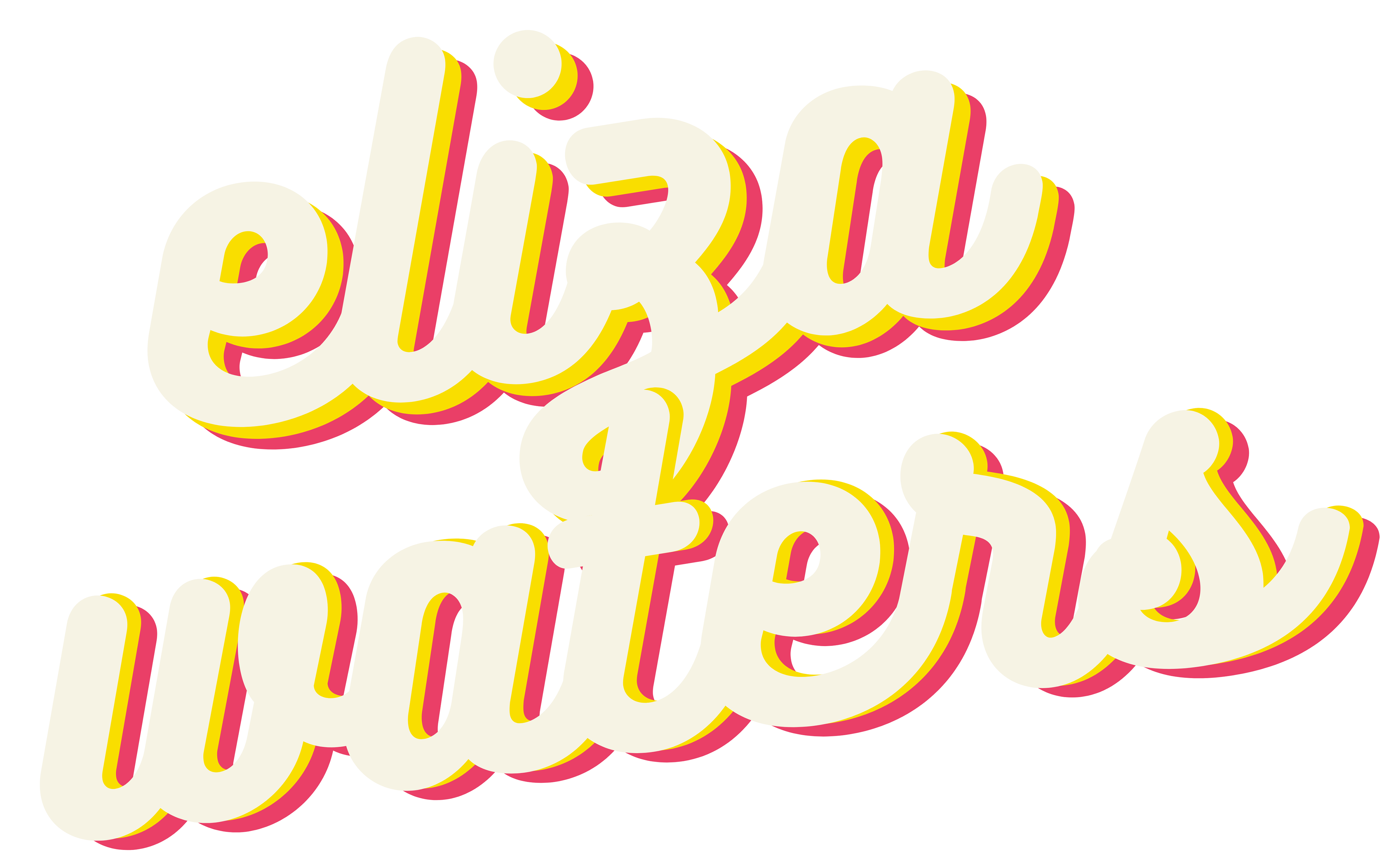Beechwood Independent Schools is a small school district located in Fort Mitchell, Kentucky. They have recently integrated their EDGE program into the elementary, middle, and high school's curriculum. This consists of an emphasis on soft skills, focused seminar classes in the middle school, and minors for high school students.
For my capstone course, we consulted on four problems Beechwood identified: (1) There's currently no way to show Beechwood students' work than a simple transcript (2) some teachers do not believe in Beechwood's new curriculum and they need more buy-in (3) There is currently no way to track the school's EDGE program (4) some stakeholders do not buy-in to EDGE.
With these four problems in mind, my group set off on a three-week consulting journey in which we talked to 37 experts and thought leaders on the subject and developed an in-depth proposal for the administration and school board at Beechwood Independent Schools.

Our group, Corner Piece Consulting. From left to right: Peyton Krell, Madeline Conroy, Hannah Straub, and myself. We began our presentation by asking the superintendent of Beechwood Independent Schools, Mike Stacey, one simple question: "why did you get into education?" This allowed us to connect with Mike as well as establish what's important: relationships.
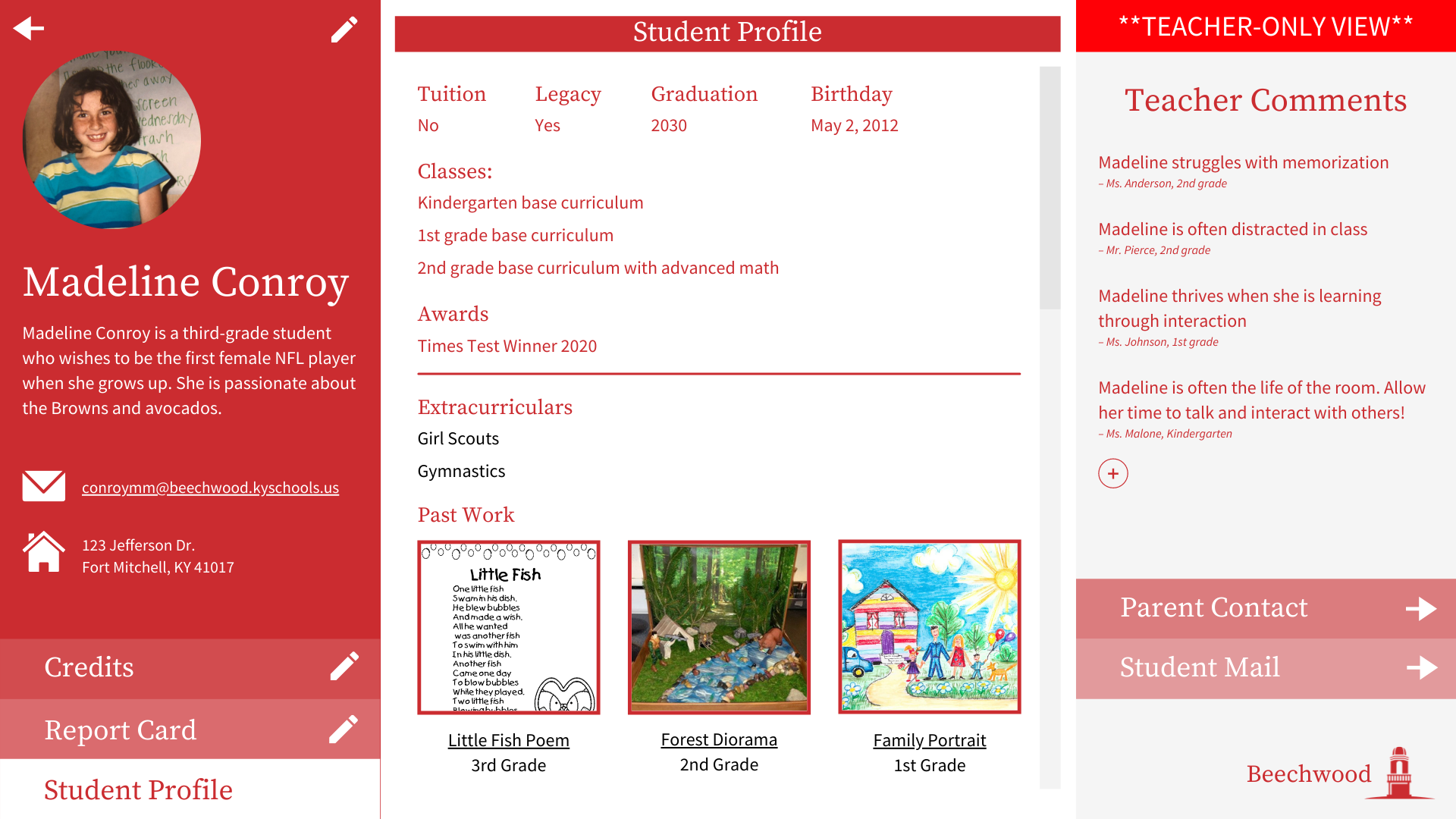
The first part of our proposal was the student profile. This is a 13-year, comprehensive record of a student throughout their time at Beechwood. This would allow students to take ownership of their learning and teachers to better understand their students. The result of the profile would be simple communication and collaboration between students, teachers, and parents and would be easily integrable into Beechwood's current learning management system, Infinite Campus.

Our second part was to integrate the Mastery Transcript Consortium into Beechwood's current system. MTC is an already established system that shows more than just students' letter grades, one of Beechwood's key problems. It is a new, innovative transcript that has no letter grades and reflects the strengths, interests, and unique qualities of each student.
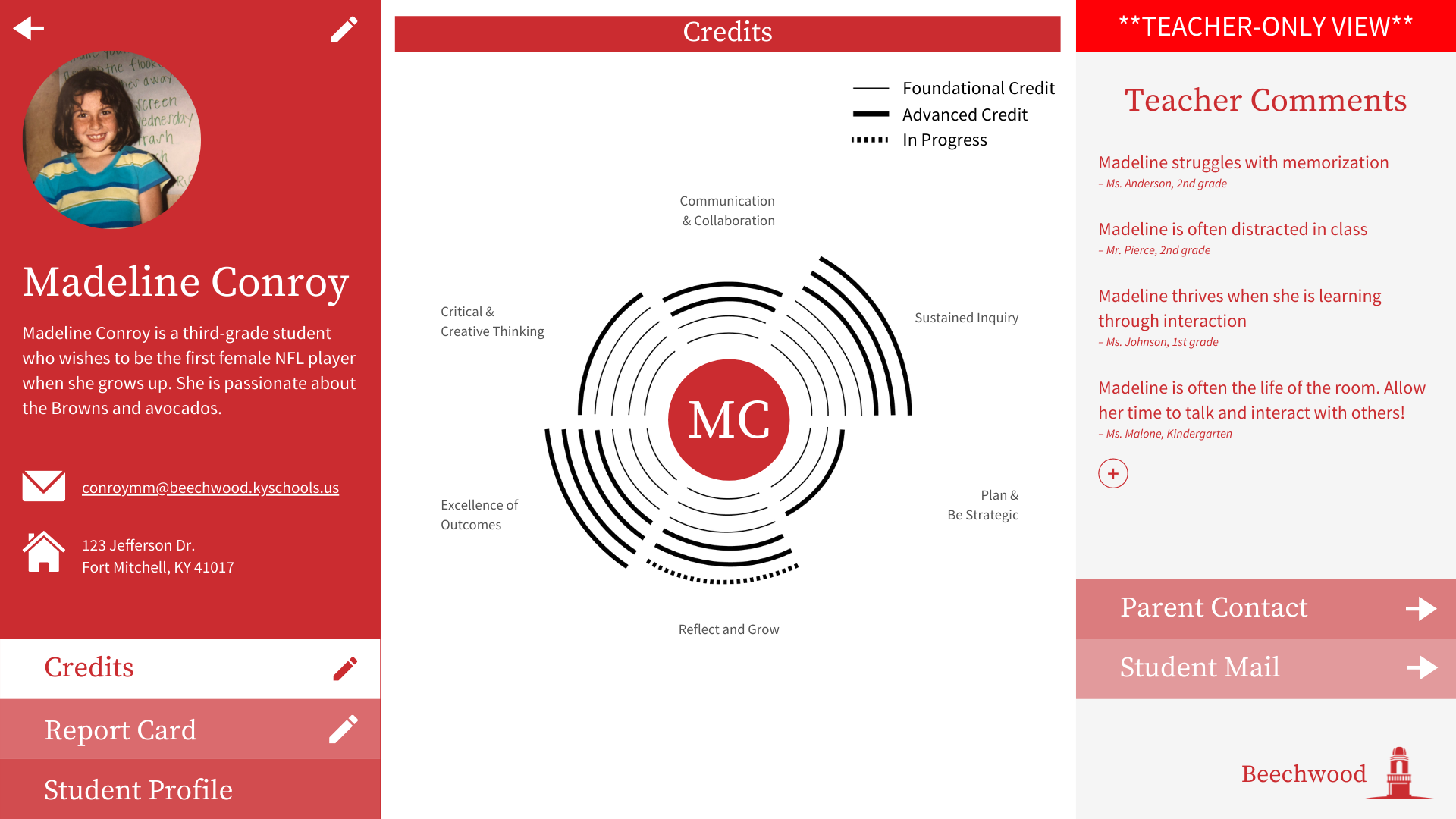
The key to the MTC is that Beechwood could choose the skills they want to evaluate their students on. In this case, we chose their already established values: communication and collaboration, sustained inquiry, plan and be strategic, reflect and grow, excellence of outcomes, and critical and creative thinking. Our proposal would allow all traditional grades to still be available for the time being and slowly work towards MTC being the main form of the transcript at Beechwood.

With the support of the student profile and the Mastery transcript innovation, we created the third part of our solution: connection conversations. These would be one-on-one discussions each semester between students and teachers. Every time they have a connection conversation they update the student profile for support of the student throughout their years. We established our discussion with Mike Stacey at the beginning of the pitch with just a 45-second conversation that created a connection, but imagine if this was a 15-minute conversation between students and teachers. The conversations’ main goal is for the teachers to assess individual student learning while helping build a strong and trusting student-teacher relationship, which will break down the student-teacher barrier and teach students self-advocacy skills. Connection conversations will shift the focus to each student's learning, growth, and goals, rather than letters in the grade book. These conversations would have three categories of questions: relationship-strengthening questions, questions that assess student skills, and self-advocacy questions. The combination of student profile, MTC, and connection conversations would help with soft skills, connection with faculty, and building student’s own self-advocacy.
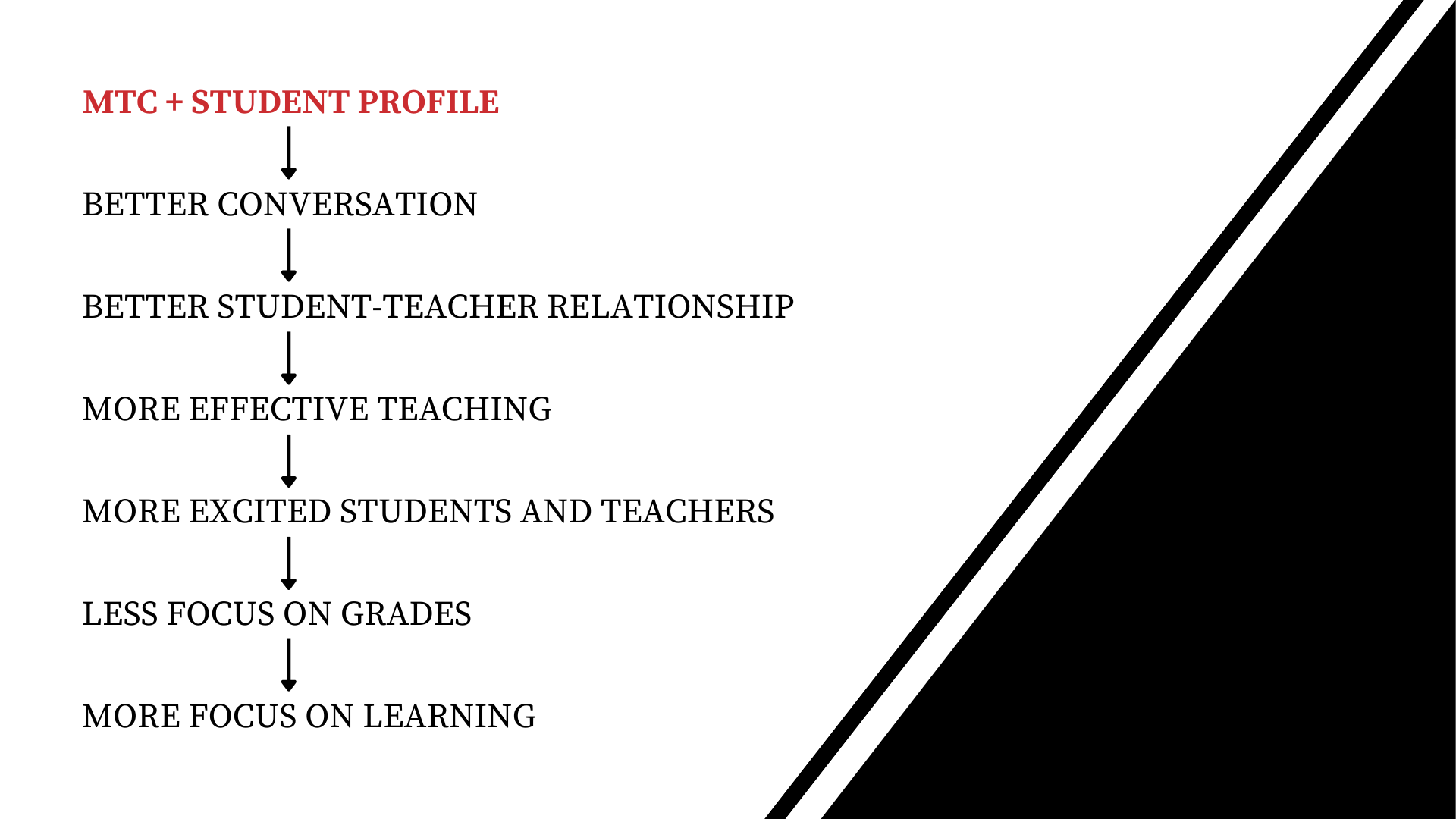
Using the MTC and Student profile creates better connection conversations, which creates a better student-teacher relationship, leading to more effective teaching, excitement in students and teachers, which in turn leads to less of a focus on grades and more love of learning among students.
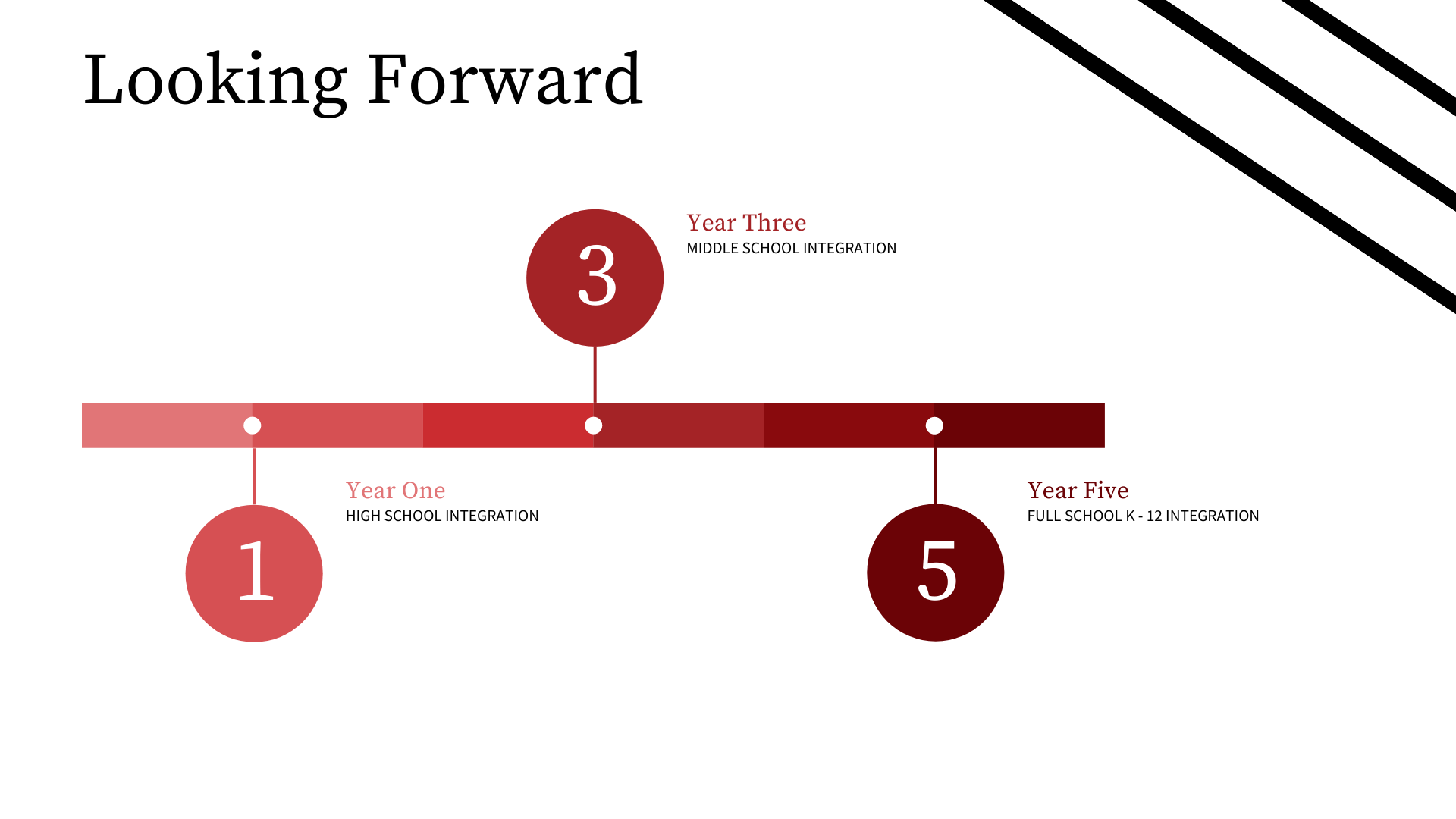
Looking forward, we felt that connection conversations should be implemented in the high school initially, being able to be implemented in the middle school by year three and by year five a full integration of semesterly connection conversations, MTC, and student profile from K-12.
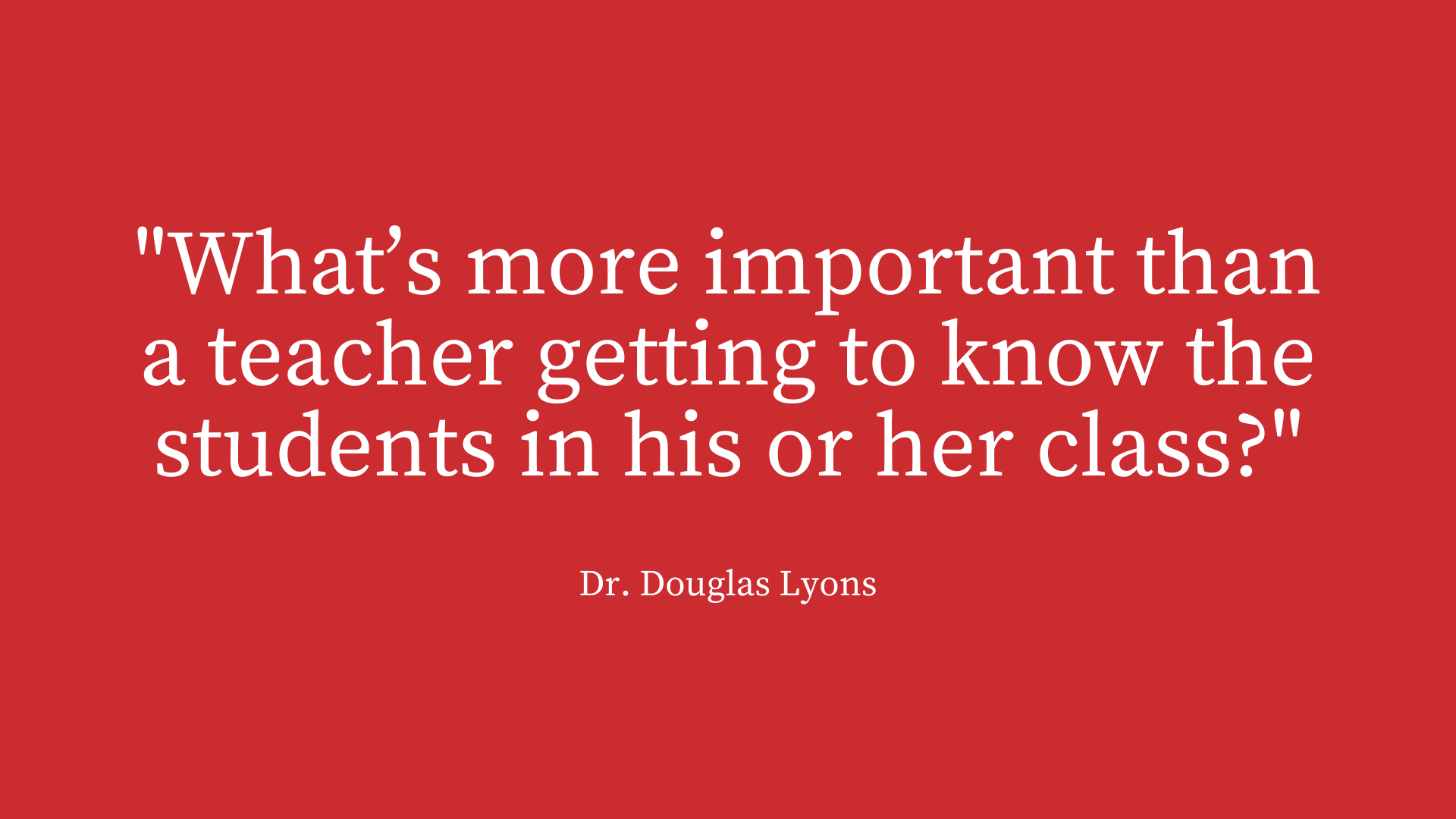
We think our solutions are essential because as one of our experts Dr. Douglas Lyons said, “what’s more important than a teacher getting to know the students in his or her class?”
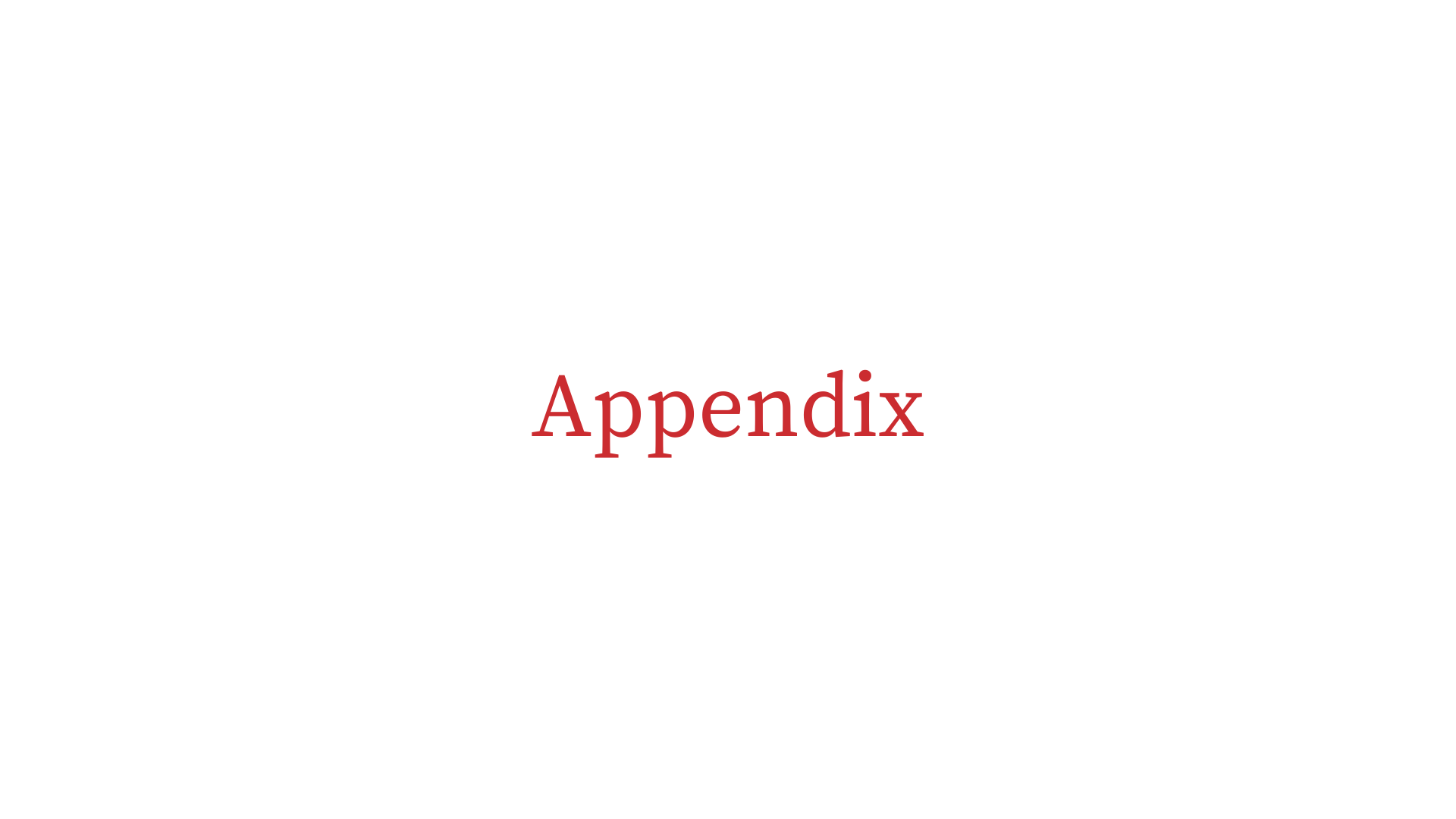
We created an appendix to answer questions from the school board and administration.
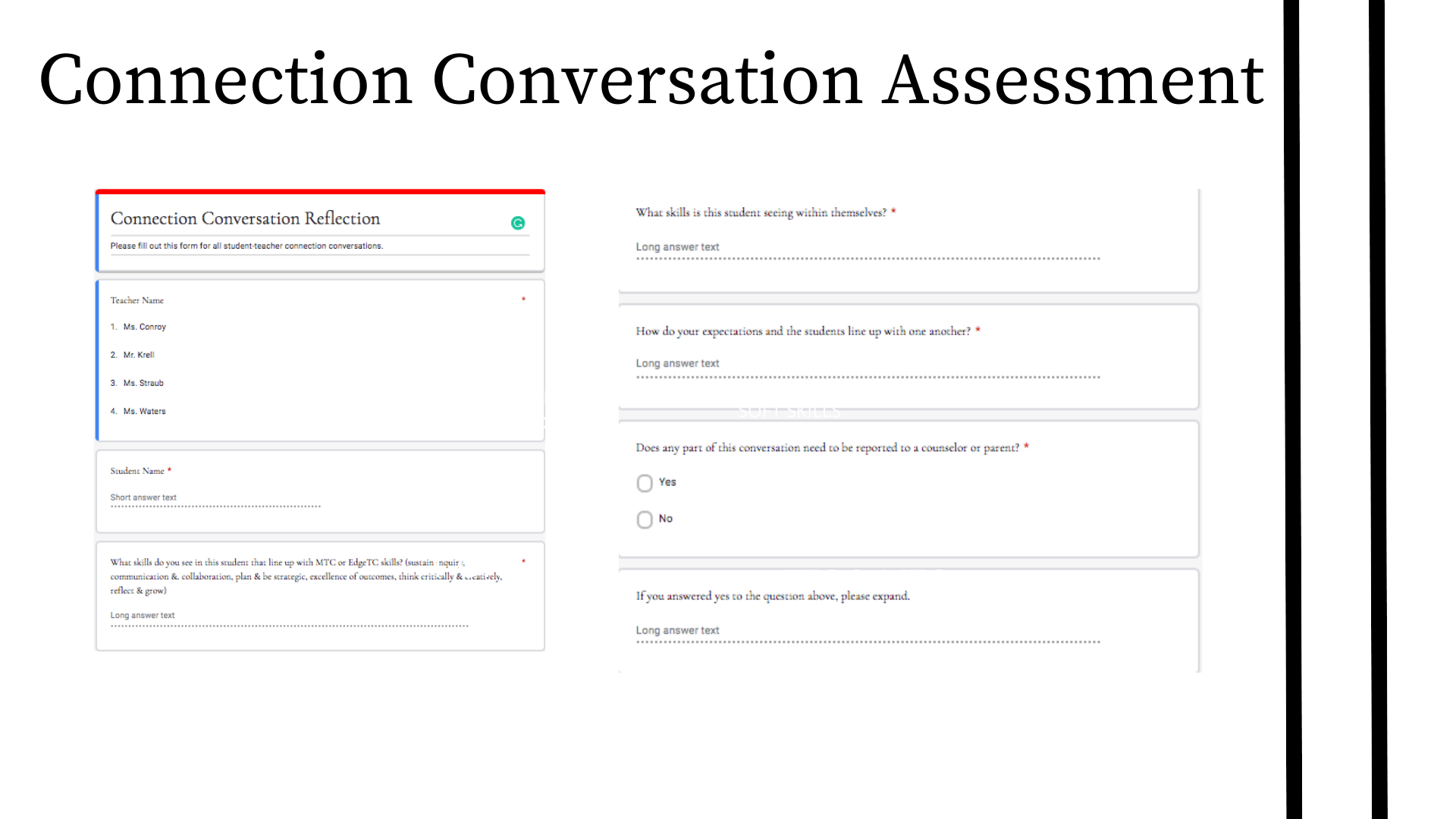
A simple assessment for teachers to fill out. This would allow teachers and administrators to keep track of student's skills and feeling while not sharing their personal information and conversations.
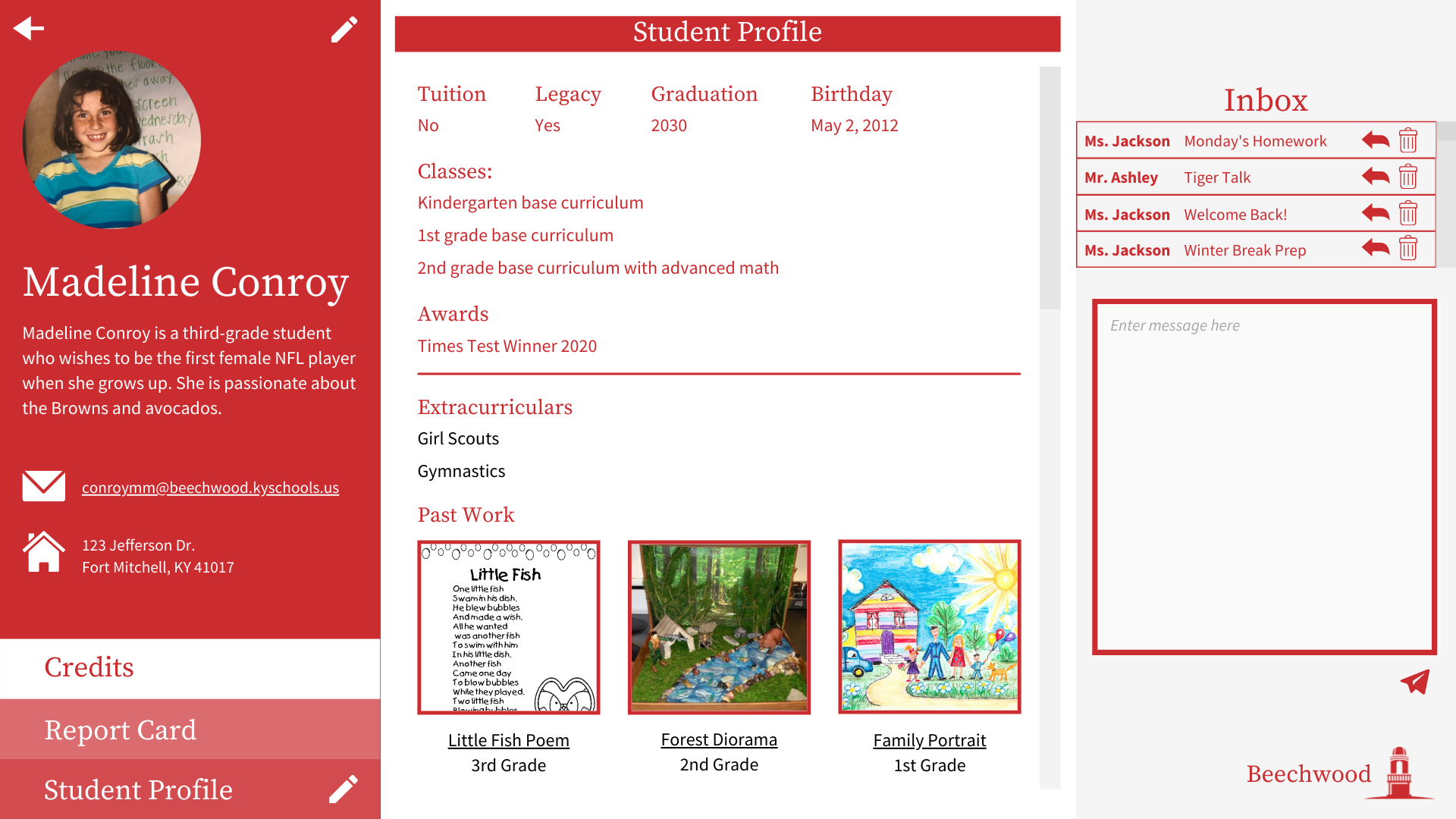
A student's view of the student profile. This would allow students to communicate with their teachers.
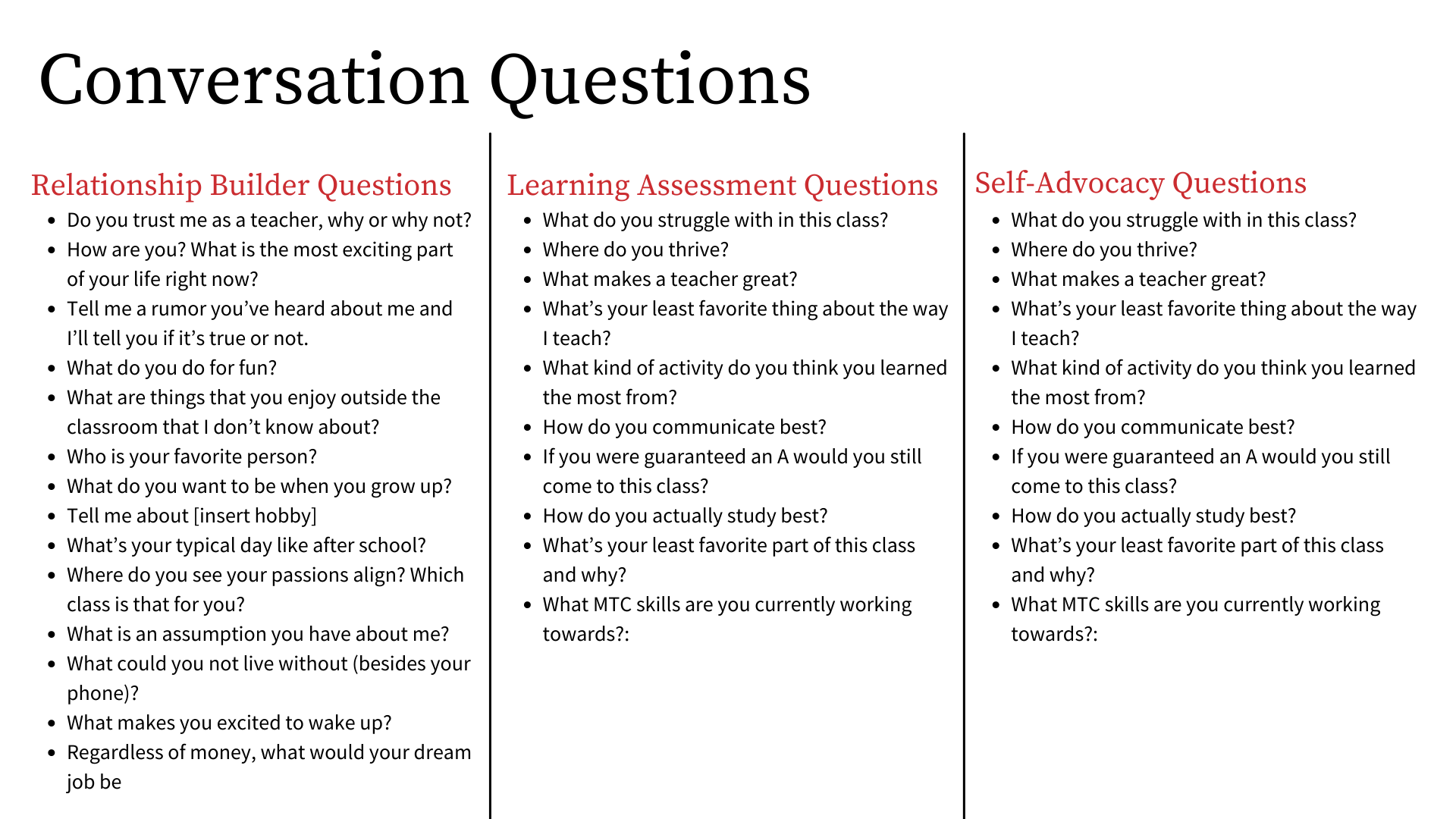
Categories of connection conversations and questions we came up with to start off the program.
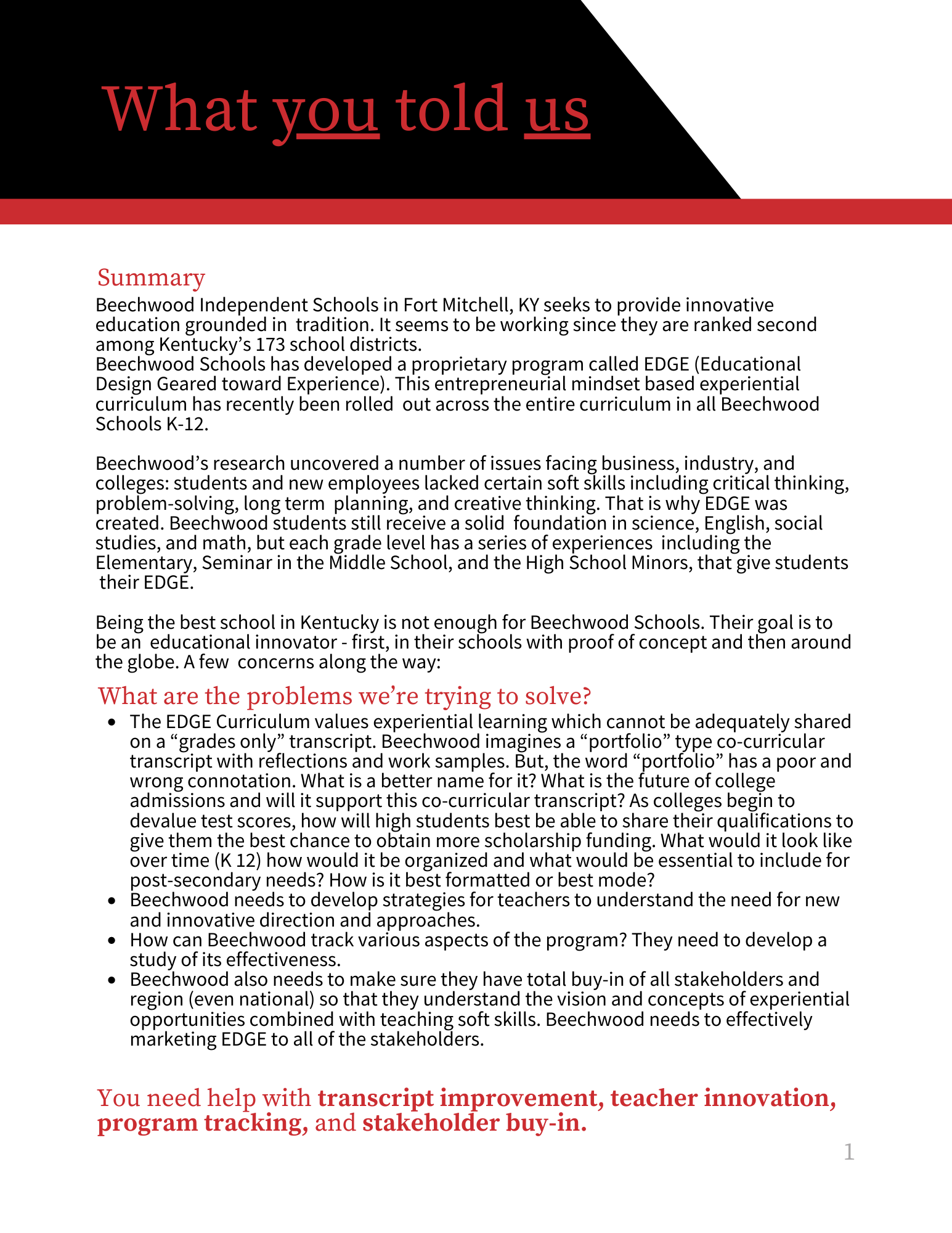
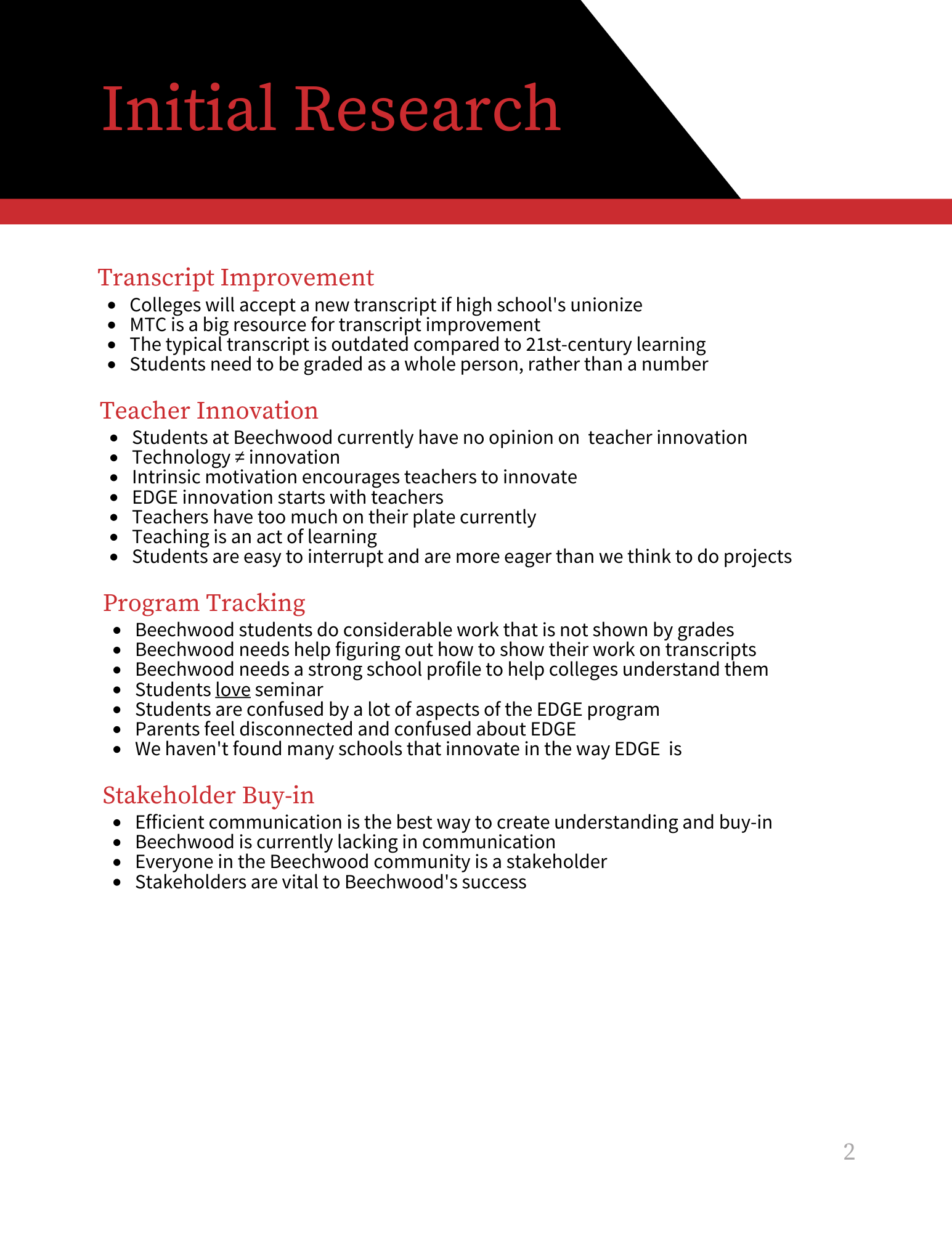
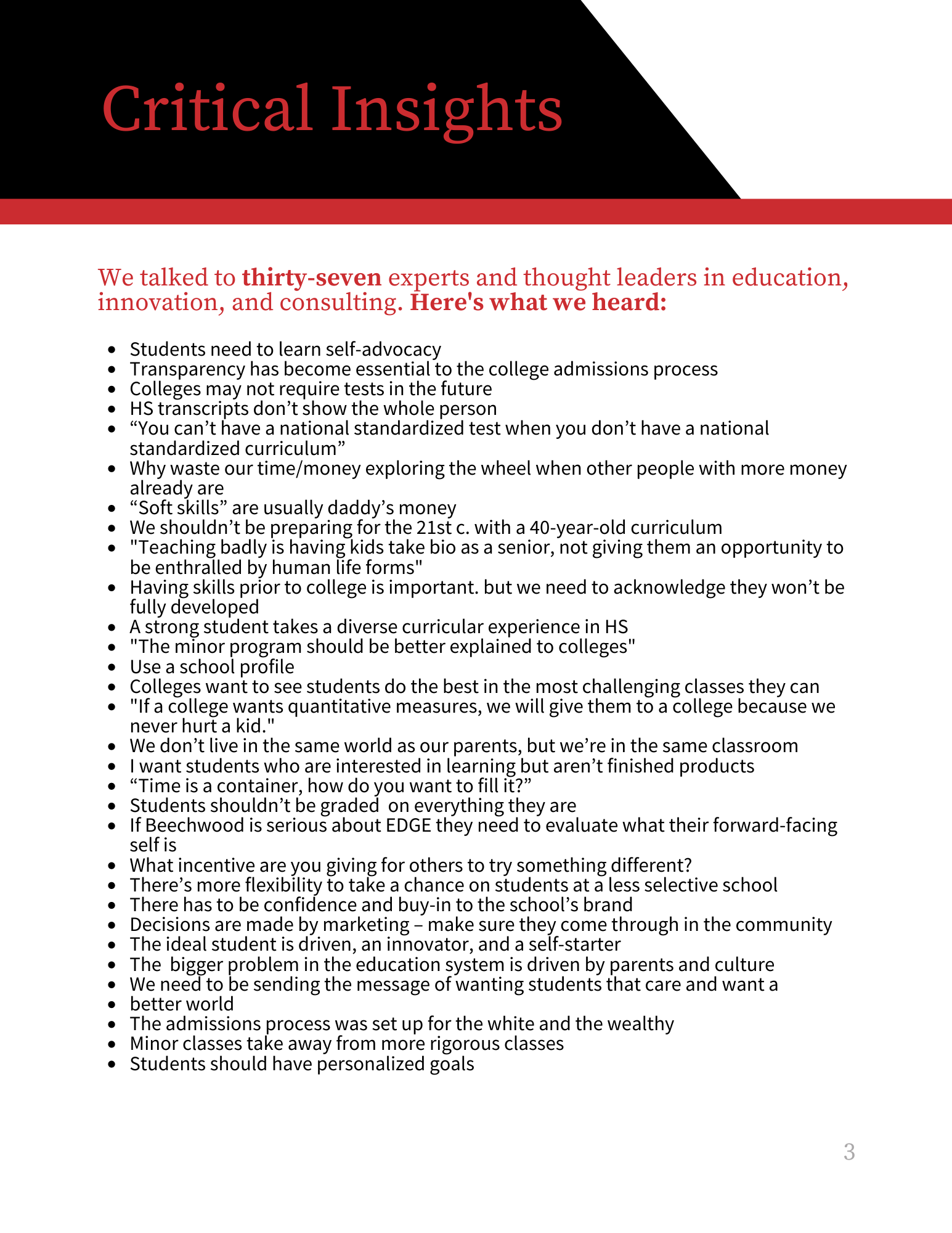
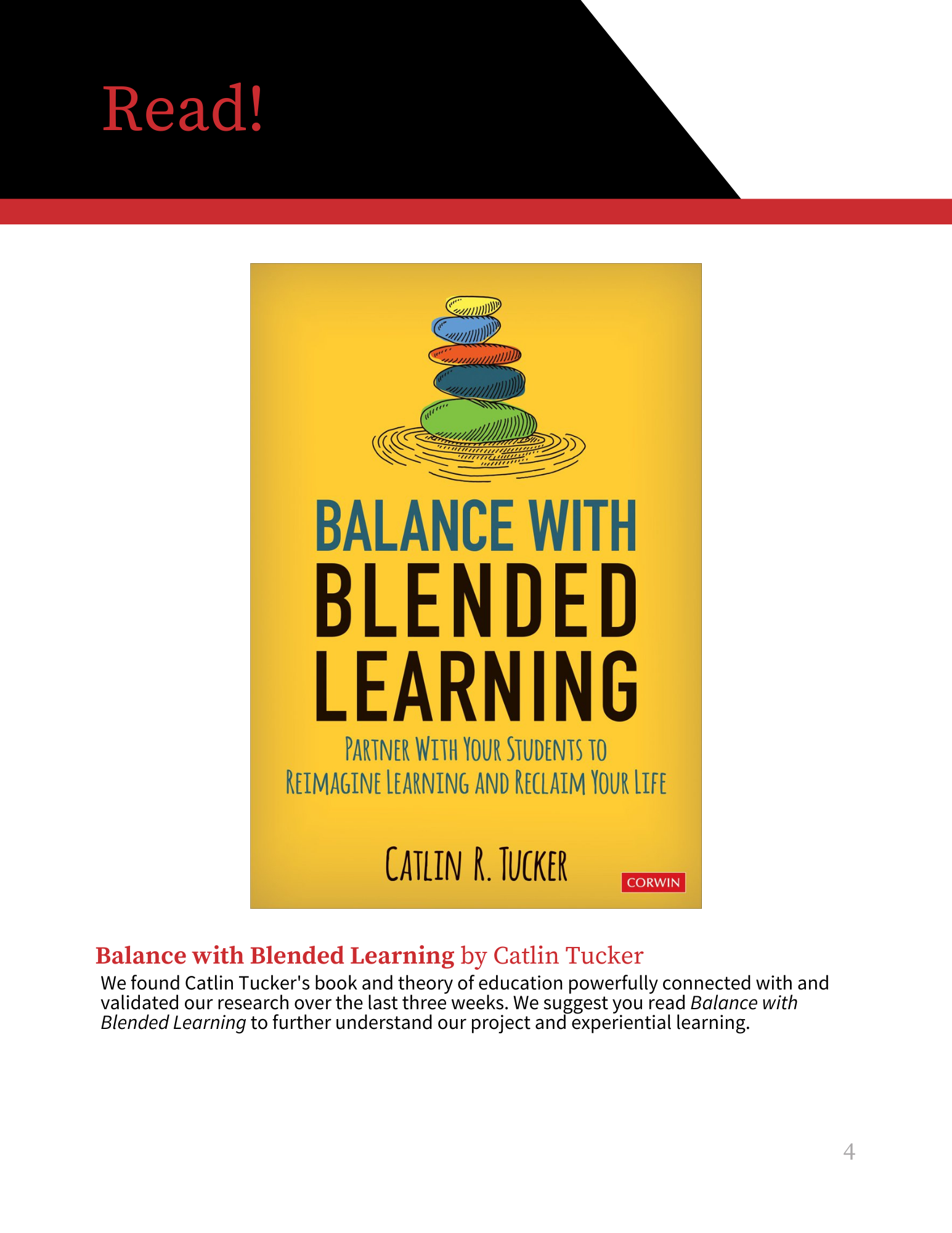
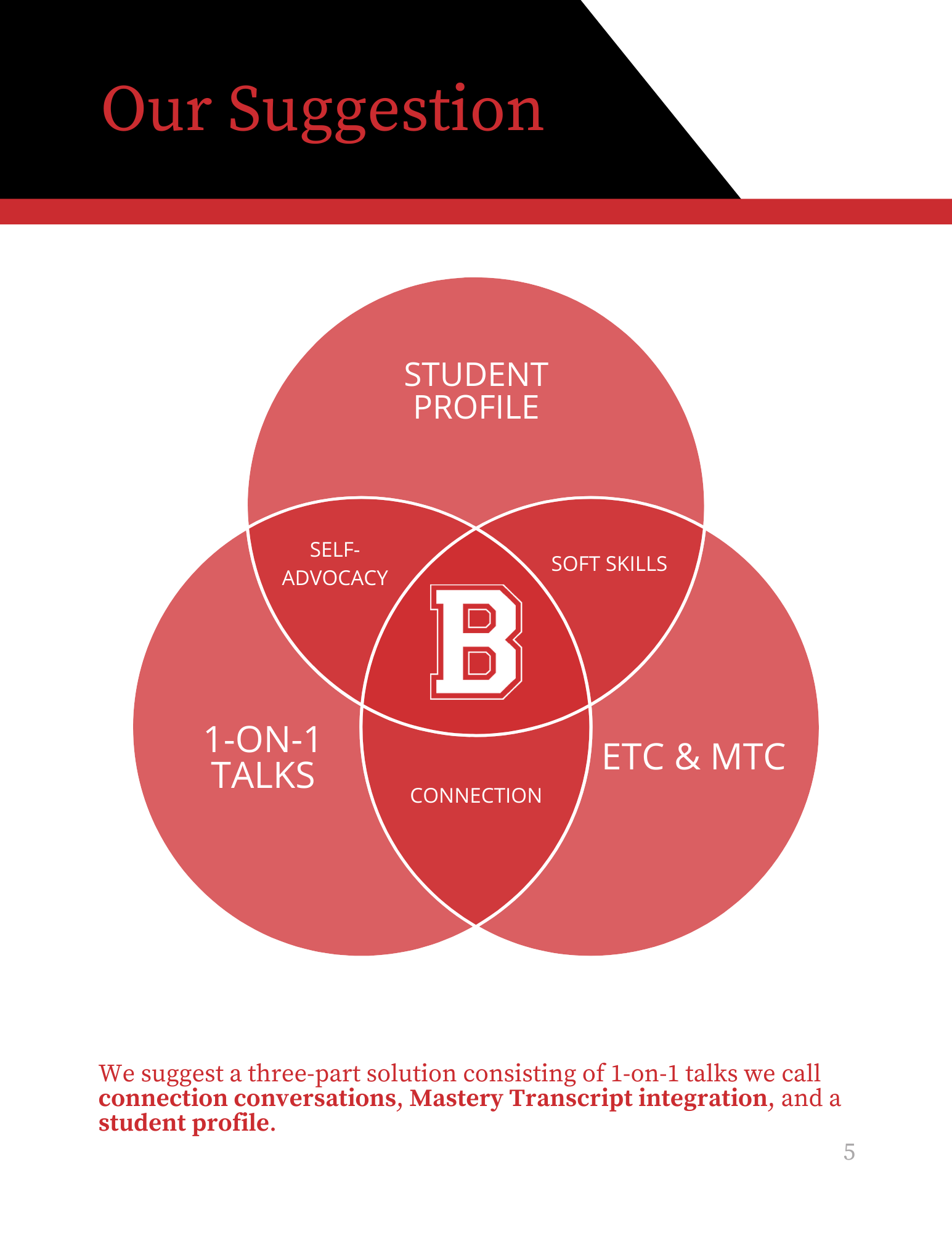

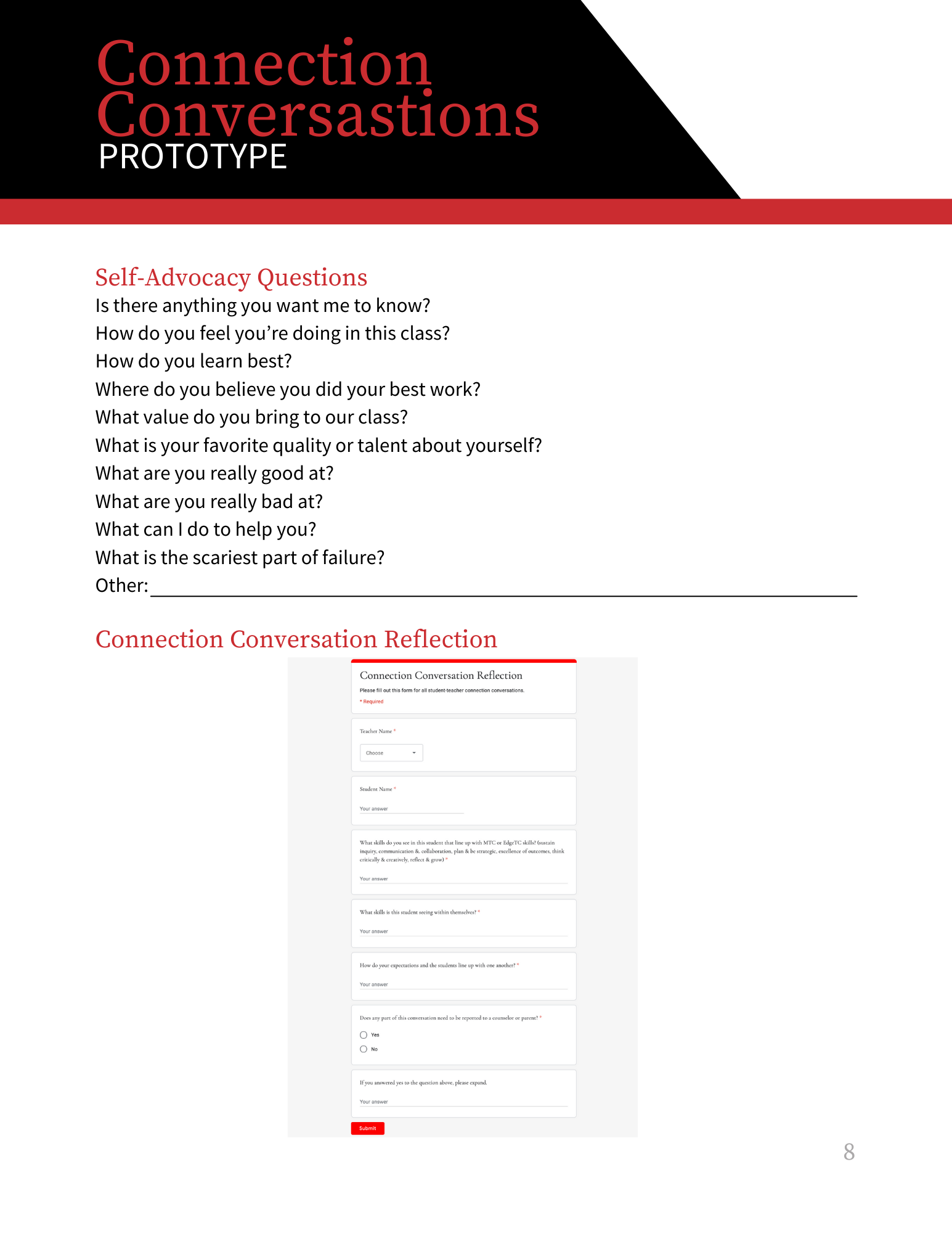
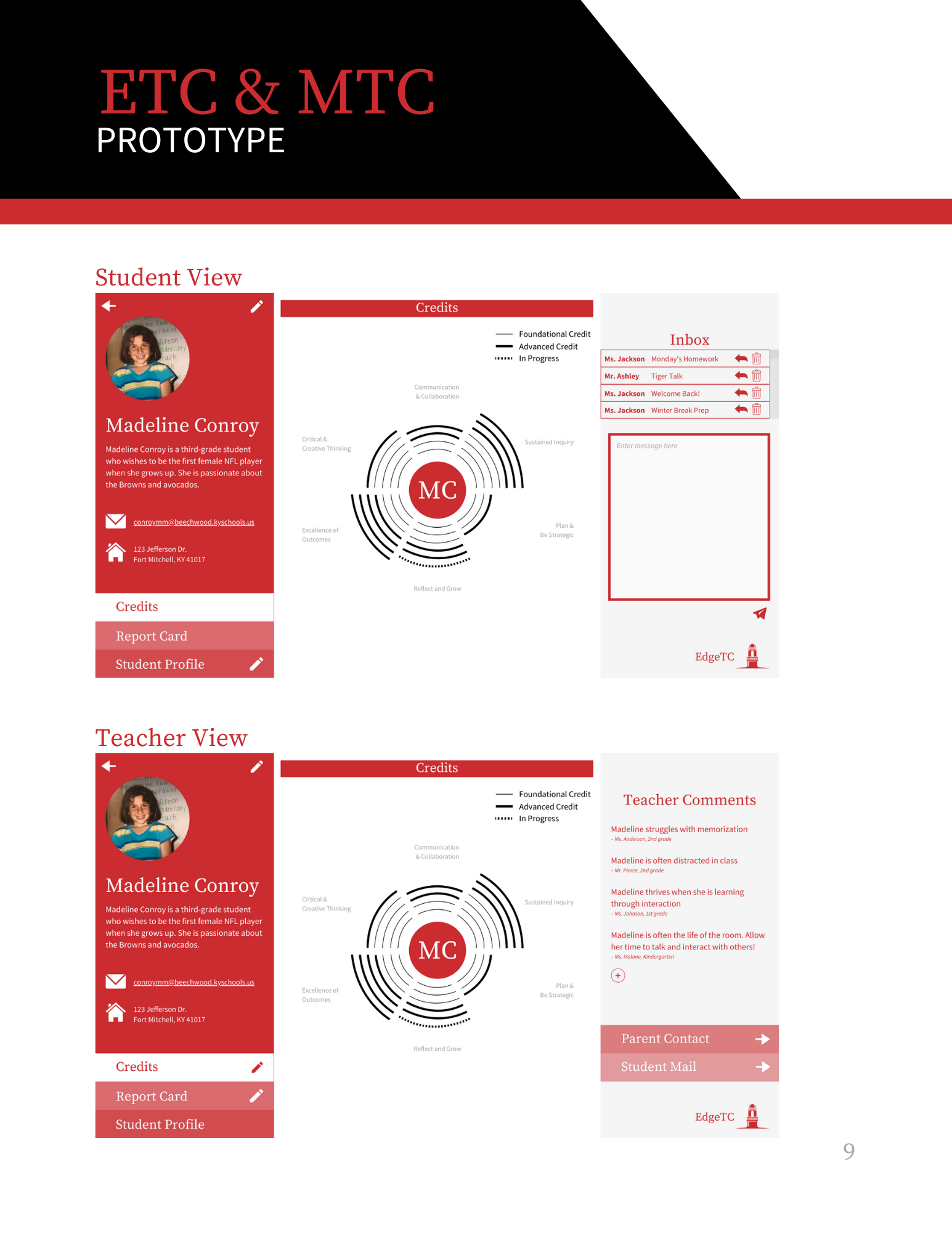
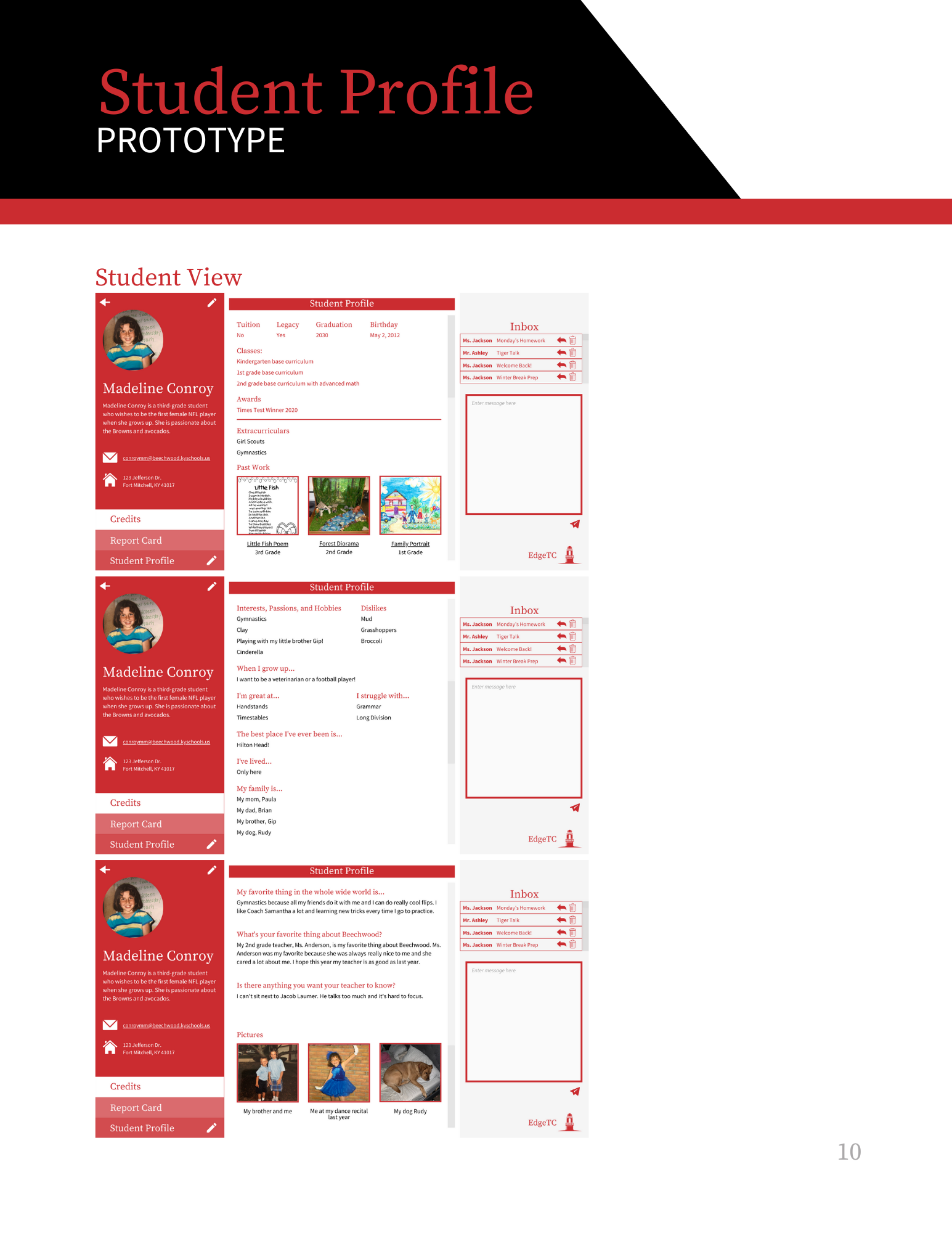
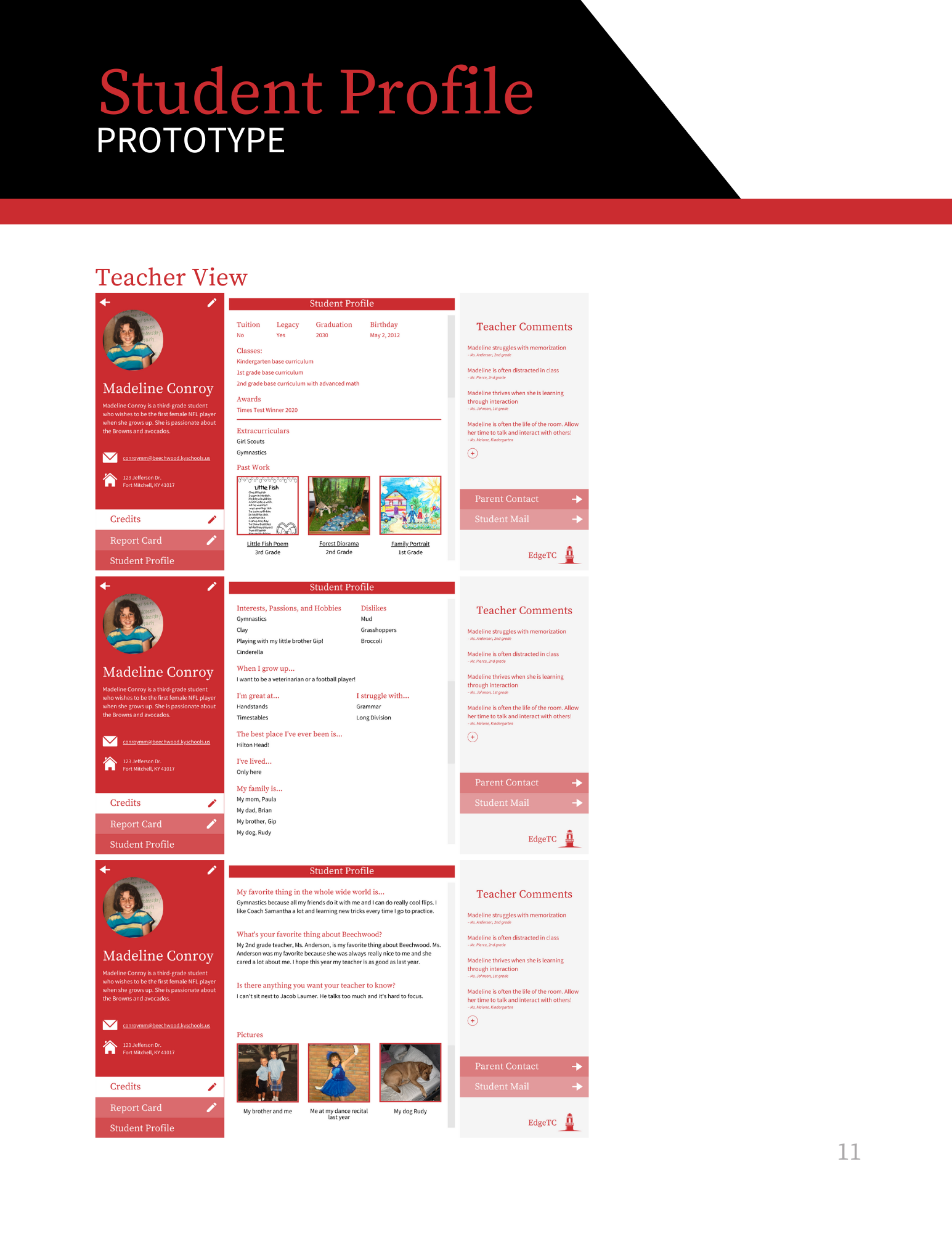
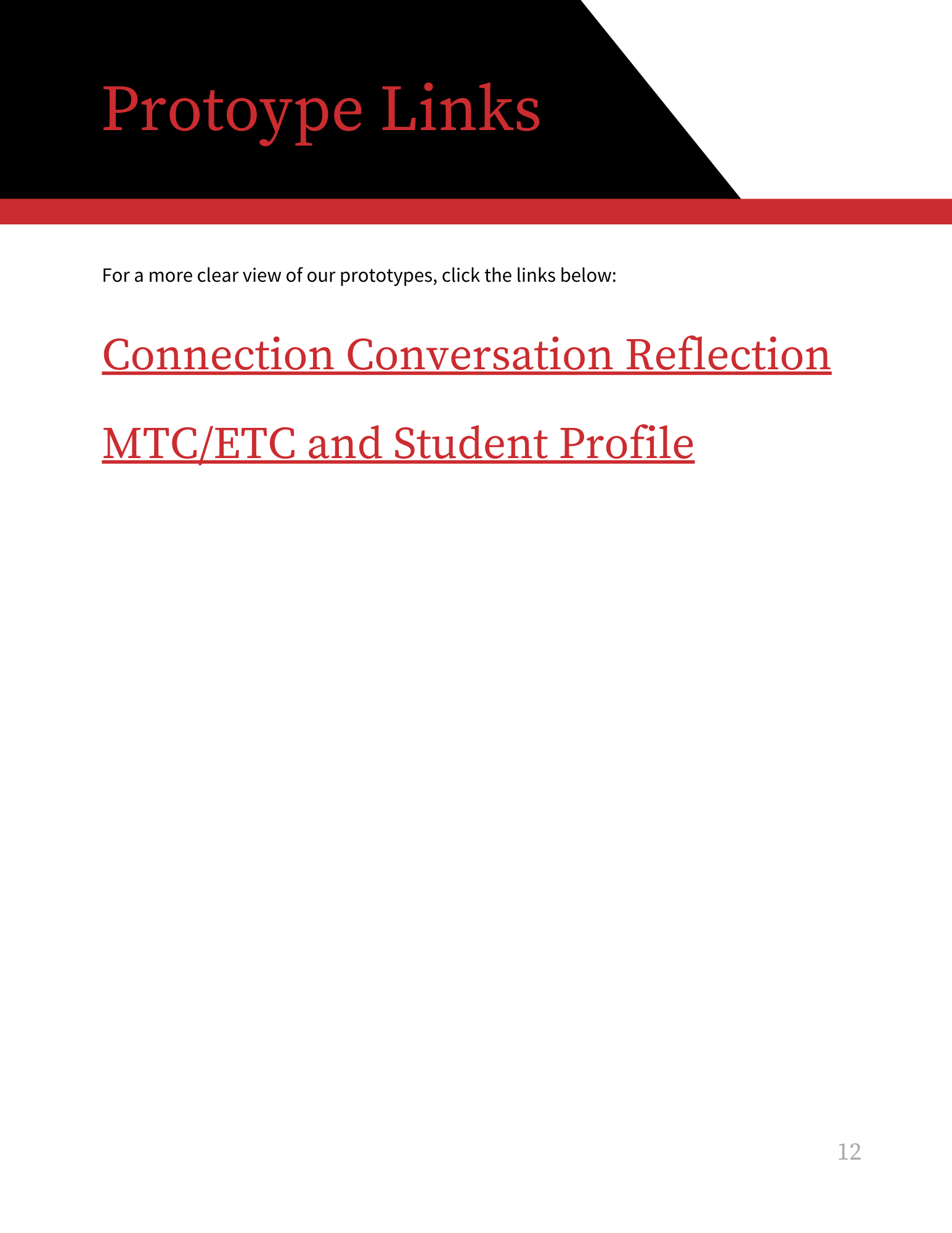
Connection Conversation Reflection: https://docs.google.com/forms/d/1lyb12mzW31dBjHuIvsFphuxOGw3nujrltDThdEagCHA/edit?usp=sharing MTC and Student Profile: https://drive.google.com/file/d/1dfu9AcK7BgBagw6vDUzPpNL_coF_rON8/view?usp=sharing
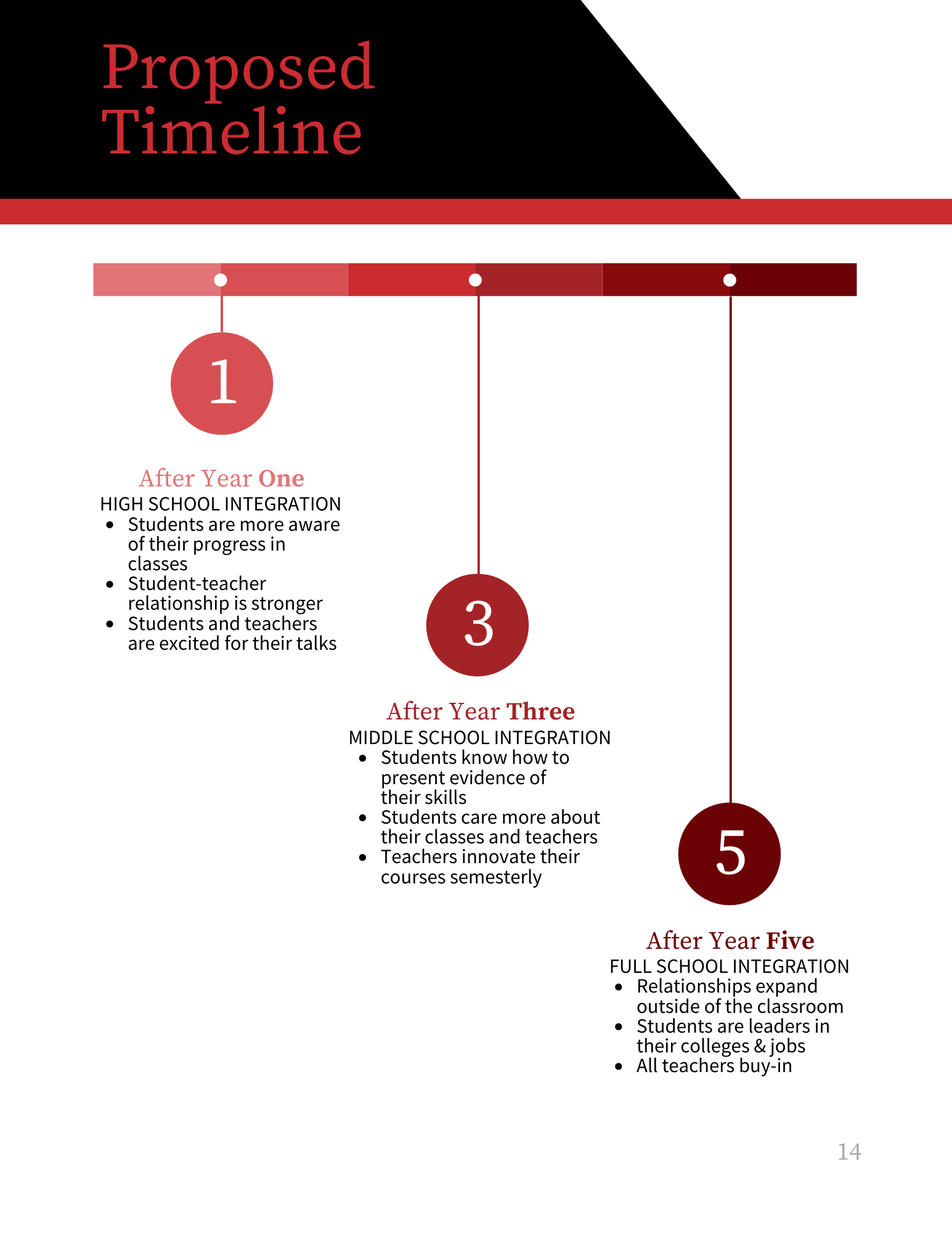
For more information, check out our process document!
